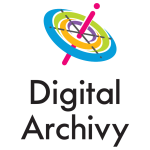Use Cases Build Better Responsiveness
Effective, practical and typical use cases build better responsiveness. One of the most critical components of a successful system is its responsiveness to users and their needs. In planning projects and in designing use cases, it is essential to work with stakeholders. Ultimately, their insights provide direction needed to develop a variety of typical task-oriented and user-driven scenarios. Good responsiveness requires a clear understanding of how People, Process and Technology work together to build an effective information ecosystem. It’s like the roots of a tree that feed content and nutrients to the leaves on the branches.
..
There are a number of moving parts in every system, but the most important part is the end users. That is why it is so critical to identify key stakeholders early. By defining a Designated Community, stakeholders and super-users can give input and help design solutions they need. User feedback combined with background knowledge help determine technical, administrative, legal, and descriptive requirements. Though each designated community is different, most share similar requirements based on content, its value, time limits, and the function of the system itself.
Use Cases Terminology
An effective Use Case demands a Designated Community with Personas, plus an awareness and familiarity with shared content in the Knowledgebase. These components make it easy to build applicable Use Cases with an understanding of each term.
Designated Community – Designated Communities represent a particular audience imagined by Open Archival Information System (OAIS) standard. It is an audience of stakeholders that produce, consume, and use content that needs to be preserved. The Designated Communities are end users and, as described by the OAIS standard, Consumers.
Personas – A Persona is an archetypical user of a system. In general, personas are fictitious people based on real-life users. Effective and well-defined User Personas require familiarity with the user, needs, workflows, frustrations and pain points, and the types of content.
Knowledgebase – The Knowledgebase contains all the content, including all formats. Whether it’s a shared drive or a DAM, an audit of content will require data on date ranges, directory names and file sizes, file formats, and more. This creates awareness of the content and makes it easier to establish a holistic strategy to connect users to resources.
Effective Use Cases
Effective Use Cases are targeted directly to the Designated Community. These solutions focus on specific needs and perspectives of Personas. With this understanding and a familiarity with the collection, it is easier to create more relevant use cases. The best designed use cases are built with an understanding and empathy for the personas and users.
Depending on the needs of the institution, use cases should address practical, tactical, typical and critical needs. The most successful ones address the needs of users. More importantly, though, solutions can be scaled to address new or changing requirements. Effective Use Cases ensure the system is responsive to its users. This builds long-term solutions that are familiar, easy to understand, and user-focused.
For more info about the OAIS standard, check out the tutorial and training resources at CESSDA.EU
If you have any questions or need suggestions, contact us!
Read More
